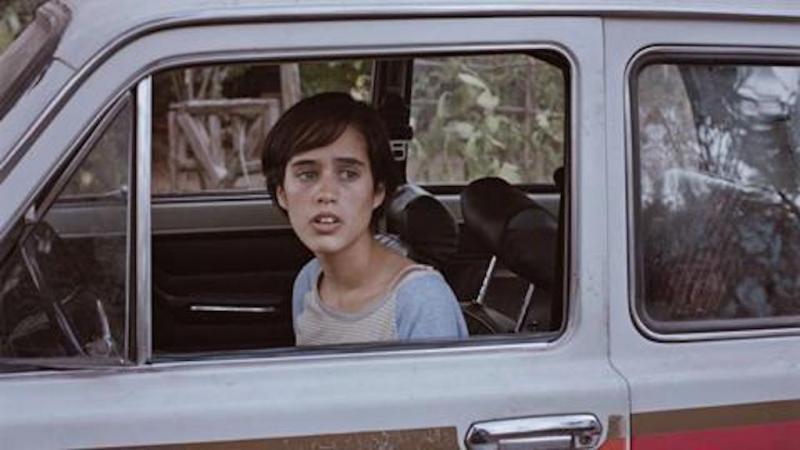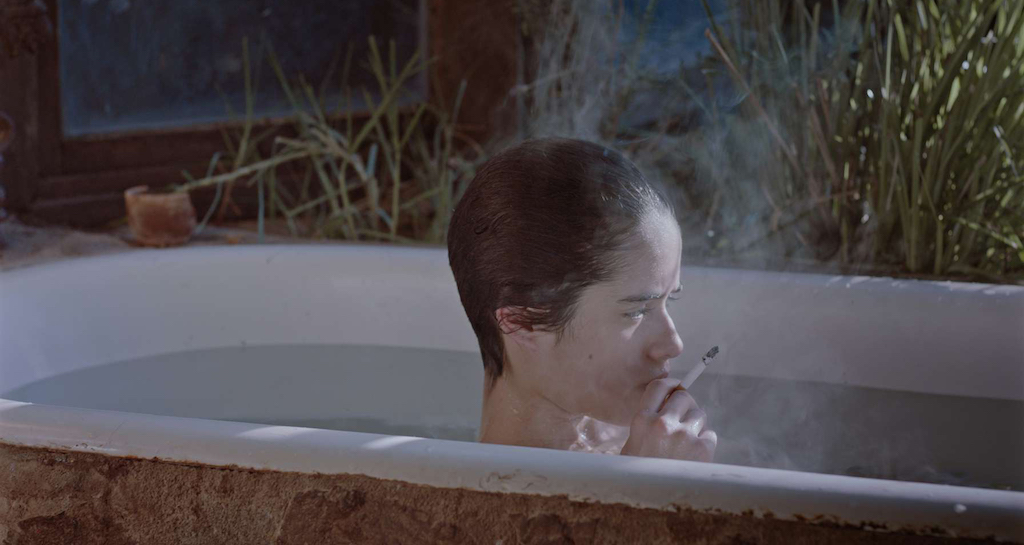Too Late To Die Young review - an absorbing, Chilean coming-of-age | reviews, news & interviews
Too Late To Die Young review - an absorbing, Chilean coming-of-age
Too Late To Die Young review - an absorbing, Chilean coming-of-age
The idealism of a green community holds little allure for a teen on the brink of adulthood

Chilean Dominga Sotomayor’s third feature is a beautifully crafted example of the kind of Latin drama that is slow-burn and sensorial, conveying emotion through gestures and looks rather than dialogue or action. Nothing much seems to be happening, but before you know it you’ve been completed sucked in.
Prompted by the writer/director’s own childhood on an ecological community outside Santiago, it offers a pithy, bitter-sweet reminder that idealism doesn’t necessarily lead to happiness and that children’s needs remain the same wherever they are: parental solidity, love, the freedom to explore themselves and the world around them.
Sixteen-year-old Sofía (Demian Hernández, pictured below) lives with her morose father and younger brother in a still ramshackle commune of artists and musicians on an unappealingly arid mountaintop. The adults debate whether they should start using electricity or idealistically continue without, and worry about who’s stealing their water supply. The kids are left largely to themselves, with little to do than scramble around the forest.
And while the camp excitedly plans for its New Year Party, the unhappy Sofía plots to return to her mother, a famous musician still living in the city – but not before first exploring her sexuality.  There’s a strong relation to Sotomayor’s debut, Thursday Till Sunday, with its focus on a girl trying to cope in the wreck of her parents’ marriage. And again there’s no rush of exposition, with little dialogue or plot, it taking us a while to realise who’s who or what’s what amid this array of families; it’s a particular narrative challenge of Latin, especially Argentine films, which can be exasperating, but also rewards resolve.
There’s a strong relation to Sotomayor’s debut, Thursday Till Sunday, with its focus on a girl trying to cope in the wreck of her parents’ marriage. And again there’s no rush of exposition, with little dialogue or plot, it taking us a while to realise who’s who or what’s what amid this array of families; it’s a particular narrative challenge of Latin, especially Argentine films, which can be exasperating, but also rewards resolve.
In fact, Sotomayer reminds one a little of the great Argentine Lucrecia Martel, not least in the way, here, she subtly introduces the tension between the camp and the indigenous people in the area, which offers another crack in the idyll.
It doesn’t satisfy entirely. The adults are frustratingly underdeveloped (a waste of such powerful actors as Antonia Zegers and Alejandro Goic), and the love triangle between Sofía, the older man she’s hooked on and a moping boy her own age with an unfortunate New Romantic haircut becomes tiresome; there's way too much sullen staring from a lad who'd be better off addressing his quiff.
Thankfully, the chief focus is on Hernández, a newcomer who positively smoulders with discontent and latent sexuality. And around her, Sotomayor beguiles with the economy of her storytelling and her painterly, often surprising compositions – cows strolling into a home, steam seemingly rising from within the girl’s sculpted head, the inevitable forest fire.
rating
Share this article
The future of Arts Journalism
You can stop theartsdesk.com closing!
We urgently need financing to survive. Our fundraising drive has thus far raised £49,000 but we need to reach £100,000 or we will be forced to close. Please contribute here: https://gofund.me/c3f6033d
And if you can forward this information to anyone who might assist, we’d be grateful.

Subscribe to theartsdesk.com
Thank you for continuing to read our work on theartsdesk.com. For unlimited access to every article in its entirety, including our archive of more than 15,000 pieces, we're asking for £5 per month or £40 per year. We feel it's a very good deal, and hope you do too.
To take a subscription now simply click here.
And if you're looking for that extra gift for a friend or family member, why not treat them to a theartsdesk.com gift subscription?
more Film
 London Film Festival - from paranoia in Brazil and Iran, to light relief in New York and Tuscany
'Jay Kelly' disappoints, 'It Was Just an Accident' doesn't
London Film Festival - from paranoia in Brazil and Iran, to light relief in New York and Tuscany
'Jay Kelly' disappoints, 'It Was Just an Accident' doesn't
 Iron Ladies review - working-class heroines of the Miners' Strike
Documentary salutes the staunch women who fought Thatcher's pit closures
Iron Ladies review - working-class heroines of the Miners' Strike
Documentary salutes the staunch women who fought Thatcher's pit closures
 Blu-ray: The Man in the White Suit
Ealing Studios' prescient black comedy, as sharp as ever
Blu-ray: The Man in the White Suit
Ealing Studios' prescient black comedy, as sharp as ever
 The Woman in Cabin 10 review - Scandi noir meets Agatha Christie on a superyacht
Reason goes overboard on a seagoing mystery thriller
The Woman in Cabin 10 review - Scandi noir meets Agatha Christie on a superyacht
Reason goes overboard on a seagoing mystery thriller
 London Film Festival 2025 - crime, punishment, pop stars and shrinks
Daniel Craig investigates, Jodie Foster speaks French and Colin Farrell has a gambling habit
London Film Festival 2025 - crime, punishment, pop stars and shrinks
Daniel Craig investigates, Jodie Foster speaks French and Colin Farrell has a gambling habit
 I Swear review - taking stock of Tourette's
A sharp and moving tale of cuss-words and tics
I Swear review - taking stock of Tourette's
A sharp and moving tale of cuss-words and tics
 A House of Dynamite review - the final countdown
Kathryn Bigelow's cautionary tale sets the nuclear clock ticking again
A House of Dynamite review - the final countdown
Kathryn Bigelow's cautionary tale sets the nuclear clock ticking again
 theartsdesk Q&A: Idris Elba on playing a US President faced with a missile crisis in 'A House of Dynamite'
The star talks about Presidential decision-making when millions of lives are imperilled
theartsdesk Q&A: Idris Elba on playing a US President faced with a missile crisis in 'A House of Dynamite'
The star talks about Presidential decision-making when millions of lives are imperilled
 Urchin review - superb homeless drama
Frank Dillane gives a star-making turn in Harris Dickinson’s impressive directorial debut
Urchin review - superb homeless drama
Frank Dillane gives a star-making turn in Harris Dickinson’s impressive directorial debut
 Mr Blake at Your Service review - John Malkovich in unlikely role as an English butler
Weird comedy directed by novelist Gilles Legardinier
Mr Blake at Your Service review - John Malkovich in unlikely role as an English butler
Weird comedy directed by novelist Gilles Legardinier
 Don't Let's Go to the Dogs Tonight review - vivid adaptation of a memoir about a Rhodesian childhood
Embeth Davidtz delivers an impressive directing debut and an exceptional child star
Don't Let's Go to the Dogs Tonight review - vivid adaptation of a memoir about a Rhodesian childhood
Embeth Davidtz delivers an impressive directing debut and an exceptional child star

Add comment